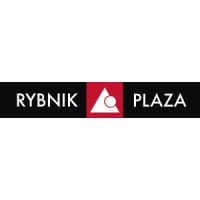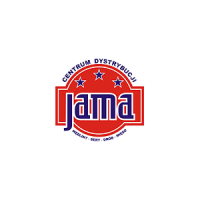What exactly is a Commercial Bank?
It gives instant cashflow whenever capital will become necessary it is maybe maybe perhaps not yet available. A bridge loan is sold with reasonably high rates of interest and should be supported by some type of security, takes deposits, while offering fundamental financial loans like cost cost savings reports and certificates of deposit to people and organizations. It generates cash mainly by giving different sorts of loans to clients and interest that is charging.
The bank’s funds result from cash deposited because of the financial institution customers in saving reports, checking records, cash market reports kinds of areas – Dealers, Brokers, Exchanges areas consist of agents, dealers, and trade areas. Each market runs under various trading mechanisms, which affect control and liquidity. The various forms of areas enable various trading traits, outlined in this guide and certificates of deposit (CDs). The depositors make interest on their deposits because of the bank. But, the attention compensated to depositors is lower than the attention price charged to borrowers. A few of the loans made available from a commercial bank include car loans, mortgages, business loans, and private loans.
Functions of Commercial Banking Institutions
The fundamental part of the bank that is commercial to offer economic solutions into the average man or woman, organizations, and organizations. Banking institutions additionally guarantee financial stability and sustainable development of a nation economy that is’s. A commercial bank does functions:
1. Accepting Build Up
Accepting deposits is among the earliest functions of the bank that is commercial. Whenever banks began, a commission was charged by them for maintaining cash on behalf for the public. Utilizing the alterations in the banking industry over the years in addition to profitability associated with the company, banking institutions now spend an interest that is small the depositors whom keep cash together with them. Nevertheless, depositors additionally sustain administrative charges their reports.
Banks accept three types of build up. 1st one is the cost savings deposit for little savers that are compensated interest on the reports. Withdraw as much as an amount that is limited composing a cheque. Style of deposit could be the present take into account people in operation who is able to withdraw whenever you want without any caution. Banking institutions don’t spend interest on deposits held in present reports. Rather, the members are charged a fee that is nominal the services rendered.
The final variety of deposit is the word or fixed deposits. Clients that have cash which they don’t need for the following half a year or higher can help to save into the account that is fixed. The compensated increases using the duration for the deposit that is fixed. Clients can only just withdraw the funds at the end regarding the agreed duration by composing to your bank.
2. Advancing Credit Places
Advancing loans is a vital purpose of banking institutions as it is the reason the percentage that is highest of income attained annually. Banking institutions mostly provide short-term and medium-term loans from a portion associated with the money deposits at an interest rate that is high. They cannot offer long-lasting financing due towards the want to keep liquidity of assets. Before advancing loans to clients, banking institutions think about the borrower’s status that is financial company profitability, nature and size of the company, and capability to repay the mortgage without standard.
3. Credit Creation
While giving loans to clients, banking institutions usually do not offer the loan in money towards the debtor. Alternatively, a deposit is created by the bank account from where the borrower can draw funds. This enables the debtor to withdraw cash by cheque in accordance with their requirements. By producing a need deposit within the borrower’s account without printing more money, the lender escalates the sum of money in blood supply.
4. Agency Functions
Commercial banking institutions act as agents clients by assisting them in gathering and cheques that are paying dividends, interest warrants, and bills of change. Additionally, they spend, bills, lease, and other fees with respect to their customers.
Banks also trade shares, securities, and debentures, and so they offer advisory solutions for clients that are looking for to get or offer these opportunities. In home management, commercial banking institutions behave as trustees Reverse Morris Trust the Reverse Morris Trust deal combines a tax-free spin-off by having a pre-arranged merger. A Reverse Morris Trust deal enables a company that is public sell down undesired assets without incurring taxation responsibilities on gains due to the purchase of those assets. And executors regarding the property with respect to their clients. Banks charge a fee that is nominal the agency functions performed on the part of their customers.
Other Functions
In addition to the above mentioned main functions, banking institutions additionally perform other functions. They supply currency exchange money danger Currency danger, or change price risk, is the publicity faced by investors or organizations that run across various nations, gains that are unpredictable losings as a result of alterations in the worth of 1 money pertaining to another money. To customers who will be within the import and export company, by purchasing and attempting to sell foreign exchange. But, banking institutions must get authorization through the regulatory human anatomy, primarily the main bank, before coping with currency exchange.
A bank that rise phone is commercial will act as a custodian of valuable rocks as well as other valuables. Customers with lockers where place their jewelry, gold and silver, and documents that are crucial. Such things tend to be more safe whenever kept during the bank than maintaining them in the home where they might be taken or damaged.
Kinds of Loans Made Available From Commercial Banks
Forms of loans advanced level by commercial banking institutions to their consumers. These loans consist of:
1. Mortgage
A financial loan is a sum of cash provided by a bank up to a debtor at interest for the period that is fixed. Before giving a financial loan to a customer, a bank must get a number of important papers to confirm that the debtor can pay straight straight back the loan. These papers can include copies of identification, evidence of earnings, and audited monetary statements in the situation of business customers. Is provided against security that, if the client defaults, they can be sold by the bank. The security might be gear, equipment, real-estate, stock, papers of ownership, along with other things.
2. Cash Credit
Money credit is definitely an arrangement between your bank and, and permits the customer to withdraw cash beyond their account restriction. The money credit is advanced level for 12 months, nonetheless it might expand to also 36 months in unique circumstances. The total amount is deposited in the present account associated with the debtor be withdrawn through cheque. The attention charged regarding the money credit is dependent upon the actual quantity of cash and length which is why the cash happens to be withdrawn.
3. Bank Overdraft
A bank overdraft is a type of financing that enables the account that is current to overdraw the account as much as a specified limitation. It doesn’t need any written formalities and consumers utilize the overdraft to satisfy needs that are urgent. Interest is charged in the quantity that the present account has been overdrawn with instead of the entire quantity of overdraft permitted because of the bank.
4. Discounted Bills of Exchange
A bank discounts a bill of change cash straight away to your holder regarding the bill. The financial institution deposits the cash into the holder’s account that is current after deducting mortgage loan for the loan duration. As soon as the bill of change matures, gets its repayment through the banker for the bill owner.
Legislation by Central Banks
Commercial banking institutions are controlled because of the main banking institutions inside their countries that are respective. Central banks work as the manager of commercial banking institutions, and additionally they enforce specific laws to guarantee banks run in the rules that are stipulated. For instance, main banking institutions allow it to be mandatory for commercial banks to keep bank reserves together with them. Some main banking institutions set the minimum bank reserves, calls for banking institutions a certain portion client deposits during the bank that is central. The reserves assist to cushion banking institutions against unanticipated activities like bank runs and bankruptcy.









